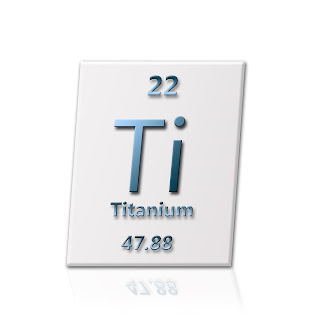Titanium's usual state is as a solid.
Element - Titanium
Tuesday 19 February 2013
Discovery Of Titanium
Who discovered Titanium?
-Titanium was discovered by William Gregor, in Cornwall, Great Britain. The element was then named by Martin Heinrich Klaproth for the Titans of Greek mythology.
Date of discovery?
-Titanium was discovered in 1791. It wasn't till 1825, titanium metal was produced.
How have titanium's uses changed over time as technology has advanced?
-Titanium has helped bike frames become stronger and easier to hold a persons weight and lasts the duration of many bike rides. Titanium doesn't rust, doesn't need to be painted and lasts long.
-Titanium was discovered by William Gregor, in Cornwall, Great Britain. The element was then named by Martin Heinrich Klaproth for the Titans of Greek mythology.
William Gregor
Martin Heinrich Klaproth
Date of discovery?
-Titanium was discovered in 1791. It wasn't till 1825, titanium metal was produced.
How have titanium's uses changed over time as technology has advanced?
-Titanium has helped bike frames become stronger and easier to hold a persons weight and lasts the duration of many bike rides. Titanium doesn't rust, doesn't need to be painted and lasts long.
Products/Things Made Of Titanium
Products/Things of Titanium
Titanium Cylinder
Titanium Cutlery and Utensils
Titanium Body Piercings
Titanium Pipes and Other Titanium Pieces
Titanium Rings
Titanium Bike Frames
Properties Of Titanium
Physical Properties of Titanium.
-Titanium is a dark grey, metallic element. It can be seen as a shiny metal or as a dark grey powder. This metal is a strong metal with low density. Titanium is lightweight, strong and corrosion (damage) resistant. Out of all the elements in the earths crust, titanium is the ninth most plentiful. Small amounts of nitrogen or oxygen, makes titanium much stronger.
Chemical Properties of Titanium
-Like magnesium and aluminium metal surfaces, titanium metal and alloy surfaces combine when exposed to air. Titanium cannot be melted in open air, since it burns before the melting point is even reached.
Re-activity Of Titanium
Is Titanium reactive or non-reactive?
-The chemical property of titanium is the most noted because of its excellent resistance to damage. It's almost as resistant as platinum, capable of withstanding attack by acids, but is soluble in concentrated acids.
-Whereas titanium is thermodynamically (heat) a very reactive metal, it's slow to react with water and air.
-In general, titanium tends to be unreactive. Titanium becomes more reactive at high temperature. If in presence of oxygen, the metal can catch on fire.
-The chemical property of titanium is the most noted because of its excellent resistance to damage. It's almost as resistant as platinum, capable of withstanding attack by acids, but is soluble in concentrated acids.
-Whereas titanium is thermodynamically (heat) a very reactive metal, it's slow to react with water and air.
-In general, titanium tends to be unreactive. Titanium becomes more reactive at high temperature. If in presence of oxygen, the metal can catch on fire.
Titanium Compounds
What other elements can Titanium join with, to form compounds?
-The most important compound, of Titanium, would be Titanium Dioxide (TiO2) Titanium Dioxide is a dense white powder with excellent hiding powder, meaning anything beneath it can't be seen. Titanium Dioxide creates white.
-Titanium can also be joined with Sulphur, Chloride, Nitrogen, Bromine, Iodine, Fluorine and Hydrogen.
-Titanium Sulphide: TiS, Titanium Dichloride: TiCl2, Titanium Nitride: TiN, Titanium Tribromide: TiBr3, Titanium Diiodide: TiI2, Titanium Difluoride: TiF2 and Titanium Dihydride: TiH2.
-The most important compound, of Titanium, would be Titanium Dioxide (TiO2) Titanium Dioxide is a dense white powder with excellent hiding powder, meaning anything beneath it can't be seen. Titanium Dioxide creates white.
-Titanium can also be joined with Sulphur, Chloride, Nitrogen, Bromine, Iodine, Fluorine and Hydrogen.
-Titanium Sulphide: TiS, Titanium Dichloride: TiCl2, Titanium Nitride: TiN, Titanium Tribromide: TiBr3, Titanium Diiodide: TiI2, Titanium Difluoride: TiF2 and Titanium Dihydride: TiH2.
Titanium Dioxide
Titanium Mineral
Subscribe to:
Posts (Atom)












_oxide.jpg)
